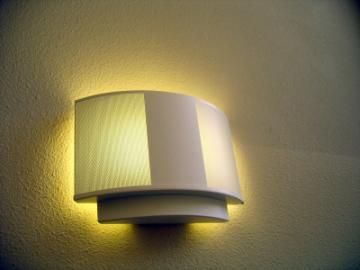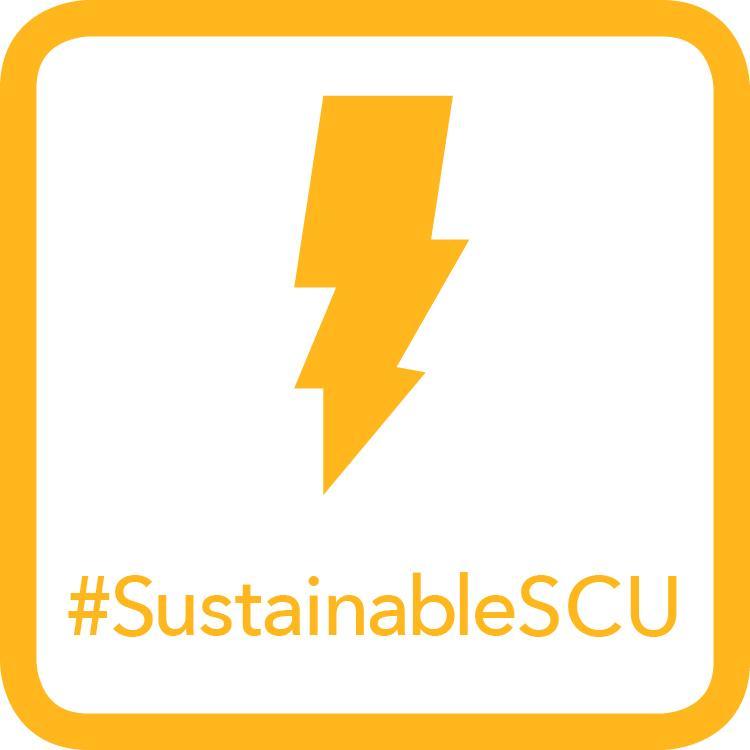The Utilities Department (within University Operations) is responsible for maintaining and leveraging our heating, ventilation and air conditioning (HVAC), lighting, indoor air quality, and utility transmission systems across the campus. SCU has a very robust energy management system and a history of successful energy savings initiatives. In fact, SCU has reduced energy use per square foot of our buildings by almost half since 2005.
-
Lighting Systems

Upgrading lighting with newer, more energy efficient fixtures saves energy and money. The payback on these upgrades is typically 2-3 years. Lighting has been upgraded in Swig Residence Hall, McLaughlin-Walsh Residence Hall, Graham Residence Hall & Benson interior & exterior, and the Learning Commons.
SCU uses Light Emitting Diode (LED) technology in the following spaces: Walsh Administration Conference Room, Support Services Parking Lot, Swig Hall Exterior Lighting.
We had a campus wide commercial lighting audit done and some of the interesting data is the total number of fixtures were 29,012 with 23,208 needed LED fixture upgrades. If all 23,208 were upgraded, the estimated annual savings would be $463,211. -
Occupancy/Light Level Sensors
SCU uses light sensors to reduce energy use in buildings. Sensors in Support Services, Bannan Labs, Learning Commons, Lucas Hall, Heafy Law Library, Benson Memorial Center, and Casa Italiana monitor natural light in almost every room and adjust the artificial lighting accordingly to minimize energy usage.
Santa Clara University also has 22 energy efficient motion sensing vending machines located throughout campus that are only activated when a person is in front them, allowing the majority of the machines components to turn off and save power when the machine is not in use.
-
Energy Management
SCU uses timers and energy management software to regulate temperature based on occupancy and outside temperatures. In order to maintain an quality indoor environment, while conserving energy as we move toward achieving our greenhouse gas emission goals, we are reminding our campus community about our building temperature standard approved by Fr. Locatelli and reaffirmed by Fr. Engh and Fr. O'Brien for all conditioned spaces:
-
Cooling Season - Occupied Set Points: 74-78F. Unoccupied Set Point: 85F.
-
Heating Season - Occupied Set Points: 68-72F. Unoccupied Set Point: 55F.
The Energy Maintenance System (Trane Tracer Summit) allows Utilities to control various systems throughout the University; including heating, air conditioning, lighting, and indoor air quality, all from a central computer. This control system allows Utilities to ensure comfortable temperatures in any occupied room as well as maximum building energy efficiency.
Energy metering systems (monitoring all energy consumed in the buildings) are currently in place in the following buildings:
Academic - Alameda Hall, Charney Hall, Heafey Hall, Library, Lucas Hall, Nobili Hall, Schott Admissions & EnrollmentAdministration - Benson Memorial Center, bookstore, Walsh Administration, Jesuit Residence HallAthletics - Leavey Center, Pat Malley, Schott Athletic Excellence CenterHousing - Campisi, Casa Italiana, Dunne, Finn, Graham, McLaughlin-Walsh, Sanfilippo, Sobrato, SwigBe part of the solution: If you are aware of a temperature or lighting issue, please email Facilities-CSC@scu.edu or call 408-554-4742. We appreciate you bringing potential energy-wasting issues to our attention. In fact, reporting building temperatures exceeding University set points earns you a Sustainability Energy Badge (click the link and scroll down to see how you can earn all 9 Sustainability Badges!)
-
-
Learn more about current energy projects. Here is a brief overview of some of our ongoing and current energy-related endeavors:
-
Design our new buildings as efficiently as possible: for example, all new buildings utilize LED lighting and state-of-the-art HVAC systems
-
Reduce energy demand of existing buildings: for example, lighting upgrades to LEDs, motion sensors to reduce unnecessary lighting, tuning up HVAC systems to ensure we are heating/cooling our conditioned buildings as efficiently as possible. Currently we are working on upgrading all campus exterior lighting to LED
- We are currently in the process of adding electric meters to the rest of campus buildings. This will allow us to monitor each buildings electric usage and be able to analyze each building's energy.
-
